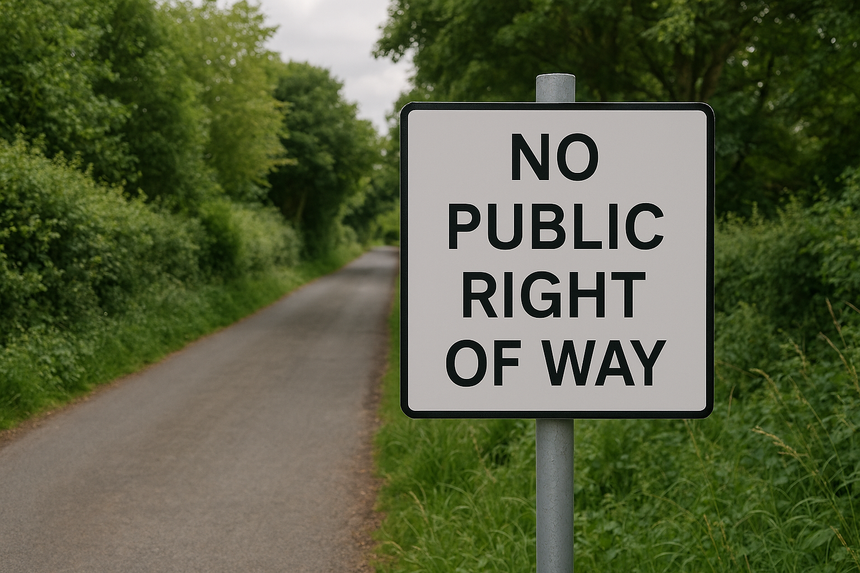27.10.2025

Signage and Prescriptive Rights of Way
The cases of Nicholson & Anor v Hale & Anor and Sagier v Kaur explore the legal effectiveness of signage in preventing the acquisition of rights of way by prescription. These cases provide valuable insights into how courts interpret the concept of “use as of right” and the role of signage in establishing or contesting such claims.
Nicholson & Anor v Hale & Anor (2024)
- Facts: The respondents sought to register a private right of way over a forecourt. The appellants had erected a sign stating: “This staircase and forecourt is private property. No public right of way.”
- Issue: Whether the sign was sufficient to prevent the acquisition of a private right of way.
- Outcome: The Upper Tribunal overturned the initial decision, ruling that the sign’s reference to “private property” and “no public right of way” was enough to make any use contentious. The court emphasized that a reasonable user would understand that no rights—public or private—could be acquired.
- Key Legal Principle: For a prescriptive easement to arise, use must be “as of right”—without force, secrecy, or permission. Clear signage can render use contentious and defeat such claims.
Sagier v Kaur (2024)
- Facts: The appellant claimed a prescriptive right of way over a private road used continuously since 1999. The respondent had placed “No Public Right of Way” signs and erected barriers.
- Issue: Whether the signage and barriers were sufficient to interrupt the prescriptive use.
- Outcome: The court ruled in favour of the appellant, finding that the signage did not clearly indicate that private rights were being contested. The use remained “as of right” and continuous for over 20 years.
- Key Legal Principle: Signage must clearly indicate that all use—not just public use—is being contested. Vague or ambiguous signs may not prevent prescriptive rights from being acquired.
Key Comparisons
| Aspect | Nicholson v Hale | Sagier v Kaur |
|---|---|---|
| Signage Wording | “Private Property – No Public Right of Way” | “No Public Right of Way” |
| Court’s Interpretation | Signage sufficient to render use contentious | Signage insufficient to contest private use |
| Outcome | No prescriptive right acquired | Prescriptive right upheld |
| Key Factor | Reasonable user would understand all rights were contested | Signage failed to contest private rights clearly |
Lessons Learned
- These cases underscore the critical importance of clear, unambiguous signage in preventing the acquisition of prescriptive rights. The courts will assess:
- Clarity of Language: Signs must explicitly state that no rights of way—public or private—are permitted.
- Visibility and Placement: Signs should be prominent, legible, and strategically placed at access points.
- Consistency and Maintenance: Signs must be maintained over time to demonstrate ongoing objection to unauthorized use.
- Documentation: Property owners should keep records of signage installation and any actions taken to prevent unauthorized access.
- For claimants, these cases highlight the need to prove continuous, open, and non-contentious use over the statutory period, and to challenge the effectiveness of any signage that purports to deny access.

